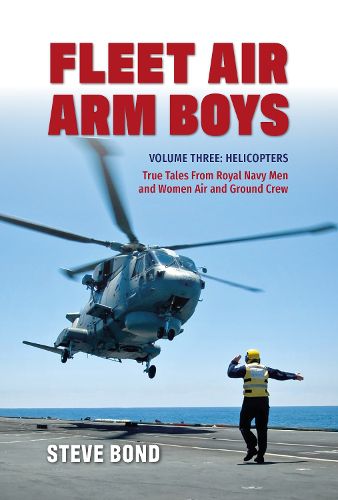Readings Newsletter
Become a Readings Member to make your shopping experience even easier.
Sign in or sign up for free!
You’re not far away from qualifying for FREE standard shipping within Australia
You’ve qualified for FREE standard shipping within Australia
The cart is loading…






Helicopters have been going to sea with the Royal Navy’s Fleet Air Arm for over 70 years. Initially used for search and rescue (SAR) duties from aircraft carriers, the rapid development of both the helicopters and service experience resulted in them taking on the vital anti-submarine (and later anti-ship) attack roles. The 1956 Suez campaign saw the first operational use of Whirlwind helicopters for the insertion of troops by air into a battle zone, a capability which was expanded with more helicopters such as the Wessex, Sea King and today’s Merlin. Through their vital role in the 1960s Indonesian Confrontation, the Commando helicopter force became universally referred to as the ‘Junglies’, by which name they are still known today. It is often said that if either of the 1982 Task Force aircraft carriers had been lost the Falklands War could not have been won. The same would surely have been true without helicopters. Their vital tasks, including inserting Special Forces behind enemy lines, protecting the Task Force from Exocet missile attack and recovering wounded troops whilst under enemy fire, are rightly hailed as being instrumental. At home, the essential SAR effort by both the Royal Navy and their RAF counterparts has resulted in incredible stories of saving lives against the odds. Royal Navy destroyers and frigates have also long since benefitted from having their own helicopter Flight aboard. Frequently operating in extremes of weather, flying a Wasp, Lynx or today’s Wildcat from and back to a heaving deck is every bit as risky as flying fixed-wing aircraft off the carriers of old using the cat and trap system. Once dismissed as a novelty, the helicopter has more than proved itself. Indeed, for ten years until the arrival of the Queen Elizabeth-class aircraft carriers, the Fleet Air Arm’s operational force was entirely rotary-wing. Today’s Merlins and Wildcats, with their dedicated aircrew, maintenance and support staff continue to demonstrate just how vital an asset the helicopter has become. Here are the words of the men and women themselves, skilfully brought to life by Steve Bond and profusely illustrated in colour and b/w.
$9.00 standard shipping within Australia
FREE standard shipping within Australia for orders over $100.00
Express & International shipping calculated at checkout
Helicopters have been going to sea with the Royal Navy’s Fleet Air Arm for over 70 years. Initially used for search and rescue (SAR) duties from aircraft carriers, the rapid development of both the helicopters and service experience resulted in them taking on the vital anti-submarine (and later anti-ship) attack roles. The 1956 Suez campaign saw the first operational use of Whirlwind helicopters for the insertion of troops by air into a battle zone, a capability which was expanded with more helicopters such as the Wessex, Sea King and today’s Merlin. Through their vital role in the 1960s Indonesian Confrontation, the Commando helicopter force became universally referred to as the ‘Junglies’, by which name they are still known today. It is often said that if either of the 1982 Task Force aircraft carriers had been lost the Falklands War could not have been won. The same would surely have been true without helicopters. Their vital tasks, including inserting Special Forces behind enemy lines, protecting the Task Force from Exocet missile attack and recovering wounded troops whilst under enemy fire, are rightly hailed as being instrumental. At home, the essential SAR effort by both the Royal Navy and their RAF counterparts has resulted in incredible stories of saving lives against the odds. Royal Navy destroyers and frigates have also long since benefitted from having their own helicopter Flight aboard. Frequently operating in extremes of weather, flying a Wasp, Lynx or today’s Wildcat from and back to a heaving deck is every bit as risky as flying fixed-wing aircraft off the carriers of old using the cat and trap system. Once dismissed as a novelty, the helicopter has more than proved itself. Indeed, for ten years until the arrival of the Queen Elizabeth-class aircraft carriers, the Fleet Air Arm’s operational force was entirely rotary-wing. Today’s Merlins and Wildcats, with their dedicated aircrew, maintenance and support staff continue to demonstrate just how vital an asset the helicopter has become. Here are the words of the men and women themselves, skilfully brought to life by Steve Bond and profusely illustrated in colour and b/w.